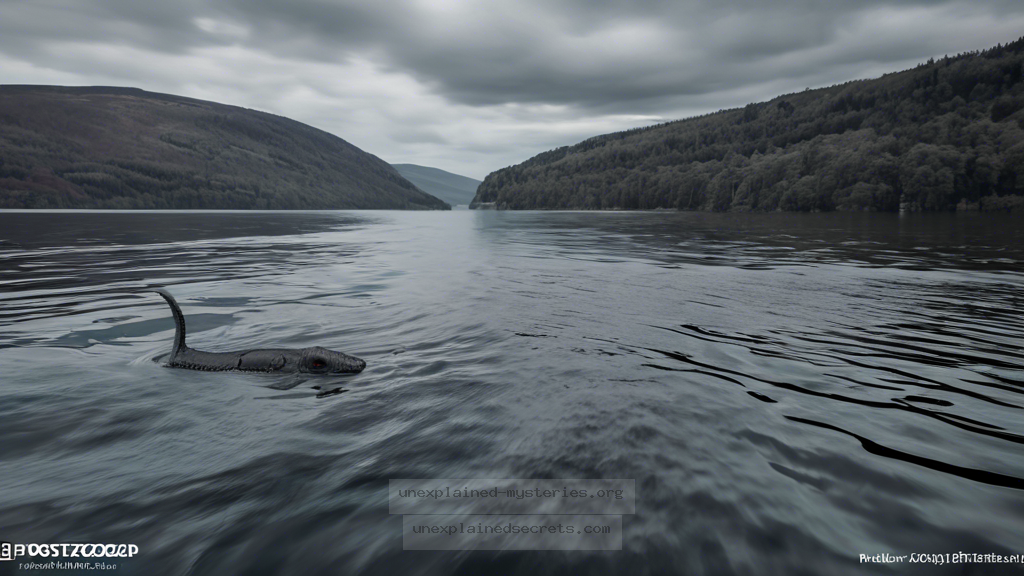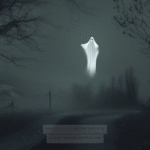What Secrets Lie Beneath the Surface of Loch Ness: Analyzing Sonar Detections of the Legendary Monster?
What Secrets Lie Beneath the Surface of Loch Ness: Analyzing Sonar Detections of the Legendary Monster?
The Loch Ness Monster, often affectionately referred to as “Nessie,” has captivated imaginations for centuries. The mystery surrounding this elusive creature has led to countless expeditions and investigations, particularly focusing on sonar detections that claim to have captured evidence of its existence. As sonar technology continues to advance, the question arises: what secrets lie beneath the surface of Loch Ness, and what do these sonar detections reveal about this legendary creature? Understanding sonar detections not only sheds light on the Loch Ness Monster but also opens a broader conversation about cryptozoology and the scientific pursuit of the unknown.
Historical Context of Loch Ness and the Monster’s Origins
Loch Ness, located in the Scottish Highlands, has been the site of numerous sightings of a large creature dating back to the sixth century. The most famous account comes from the 1930s when a photograph known as “The Surgeon’s Photograph” purportedly showed a creature swimming in the loch. This image sparked public interest and led to a media frenzy, solidifying Nessie as a cultural phenomenon. Over the decades, numerous sightings have been reported, with descriptions varying from a long neck resembling a plesiosaur to a large, whale-like body.
The legend of Nessie is deeply intertwined with the history of Loch Ness itself. The loch is one of the largest bodies of freshwater in the UK, extending over 23 miles in length and reaching depths of more than 750 feet. This vast underwater environment provides a perfect habitat for a creature of considerable size, which fuels the ongoing debates among researchers and enthusiasts.
The Role of Sonar Technology in Loch Ness Research
Sonar, or Sound Navigation and Ranging, is a technology that uses sound waves to detect objects underwater. This technology has dramatically evolved since the early days of sonar use, particularly in marine biology and exploration. In the context of Loch Ness, sonar serves as a powerful tool to explore the depths of the loch for signs of the monster.
In recent years, teams of researchers have employed various forms of sonar, including side-scan sonar and multi-beam sonar, to map the loch’s bottom and to search for anomalies or large objects. These technologies have allowed researchers to create detailed images of the underwater landscape, revealing hidden structures, underwater caves, and potential hiding places for large creatures.
Notable Sonar Detections and Their Implications
One of the most significant sonar studies occurred in 1987 during the “Operation Deepscan,” where a fleet of boats equipped with sonar technology scanned the loch. The operation uncovered several large, unexplained objects that sparked renewed interest in the Loch Ness Monster. Some sonar signals indicated movements consistent with a large creature, leading to speculation that Nessie might be more than just folklore.
In 2003, another sonar investigation led by a team from the University of St. Andrews also recorded unusual sonar readings. These readings corresponded to a large object moving within the loch, leading to further inquiry into whether this could be Nessie or just a misidentified fish or debris.
- Operation Deepscan revealed large, unexplained sonar signals.
- 2003 investigations indicated substantial movements in the water.
Core Concepts and Theories Surrounding Sonar Evidence
The sonar evidence presents various theories regarding the existence of the Loch Ness Monster. One prevalent theory is that Nessie is a surviving species of prehistoric marine reptiles, such as the plesiosaur. This theory is often supported by anecdotal descriptions from eyewitnesses who claim to have seen characteristics reminiscent of such creatures.
Another theory posits that the sonar detections may not point to a single creature but rather a group of large fish, such as catfish or sturgeons, which could mimic the size and behavior attributed to Nessie. The loch is home to a variety of fauna, and the possibility of misidentification is high, especially with the murky waters that characterize Loch Ness.
Practical Implications of Sonar Research
The implications of sonar research extend beyond merely identifying a mythical creature. The studies enhance our understanding of the biodiversity present in Loch Ness and the ecological dynamics at play. The sonar data can provide insights into the population of fish species, the health of the ecosystem, and the geological features of the loch.
Moreover, the technological advancements in sonar can also be applied to other realms of marine biology. For instance, they can assist in the conservation of endangered species or in mapping underwater habitats that are crucial for biodiversity.
- Enhances understanding of Loch Ness’s biodiversity.
- Assists in conservation efforts for marine ecosystems.
Alternative Perspectives on the Loch Ness Monster
While many enthusiasts and researchers are determined to find evidence of Nessie, there are alternative perspectives that challenge the notion of a legendary creature residing in Loch Ness. Skeptics often argue that the sightings can be attributed to a combination of optical illusions, misidentifications of animals, and even deliberate hoaxes.
For example, many reported sightings coincide with waves, boats, or other natural phenomena that can create the illusion of a large creature. Additionally, the cultural significance of the Loch Ness Monster may lead individuals to interpret ambiguous shapes in the water as Nessie rather than considering more mundane explanations.
Common Misconceptions About Sonar Detections
Misconceptions about sonar detections can lead to misunderstandings regarding the Loch Ness Monster. A prevalent myth is that sonar can definitively identify the size and nature of objects. In reality, sonar readings can only provide vague indications of size and movement, often leading to misinterpretations.
Another misconception is that sonar can capture clear images of creatures underwater. While advanced sonar technologies can create detailed maps and profiles of underwater structures, they do not provide visual confirmation of what lies beneath the surface. Thus, sonar evidence must be approached with a level of skepticism and a recognition of its limitations.
- Sonar cannot definitively identify the size or type of objects.
- Sonar images are not clear representations of underwater creatures.
Best Practices for Investigating Loch Ness
For those interested in investigating the Loch Ness Monster, there are several best practices to follow. Firstly, it is crucial to employ a combination of different technologies, including sonar, video cameras, and drones, to gather comprehensive data. The integration of various methods enhances the accuracy of findings and reduces the chance of misinterpretation.
Collaboration with marine biologists and ecologists can also provide a more nuanced understanding of the loch’s ecosystem. Engaging with local communities and their historical accounts can enrich the research with cultural context. Additionally, maintaining a critical and open-minded approach is vital; while the desire to find Nessie is strong, it is essential to balance enthusiasm with scientific rigor.
Future Developments in Loch Ness Research
The future of Loch Ness research looks promising, with advancements in technology poised to enhance the quest for Nessie. Innovations in underwater drones equipped with high-resolution cameras and advanced sonar systems will allow for more thorough explorations of the loch’s depths.
Moreover, the advent of artificial intelligence in data analysis could revolutionize the way researchers interpret sonar data, identifying patterns or anomalies that may have gone unnoticed. As interest in cryptozoology grows, funding and resources for these expeditions may also increase, leading to more comprehensive studies of Loch Ness and its enigmatic inhabitant.
Conclusion: The Ongoing Mystery of Loch Ness
The allure of the Loch Ness Monster continues to captivate people around the world, and sonar detections play a pivotal role in the ongoing investigation of this legend. While sonar technology has provided intriguing clues, the lack of definitive evidence leaves much to be explored. The interplay between scientific inquiry and folklore adds a rich layer to the mystery of Loch Ness.
As we continue to delve into the depths of this iconic loch, the search for Nessie remains an enduring quest, one that challenges our understanding of nature and the mysteries that lie beneath the surface. Whether or not the Loch Ness Monster truly exists, the journey of investigation and exploration is a testament to human curiosity and the timeless intrigue of the unknown.
Other Articles
Recent Posts
- What Happened to Flight MH370? The Conspiracy Theories That Still Haunt Us
- What Secrets Lurk Within the Walls of the Infamous Trans-Allegheny Lunatic Asylum?
- What Evidence Supports the Existence of Bigfoot in the Pacific Northwest?
- What Happened to the Indus Valley Civilization? Unraveling the Mysteries of Ancient Urban Life
- Can Telepathy Be Scientifically Proven Through Laboratory Evidence?







